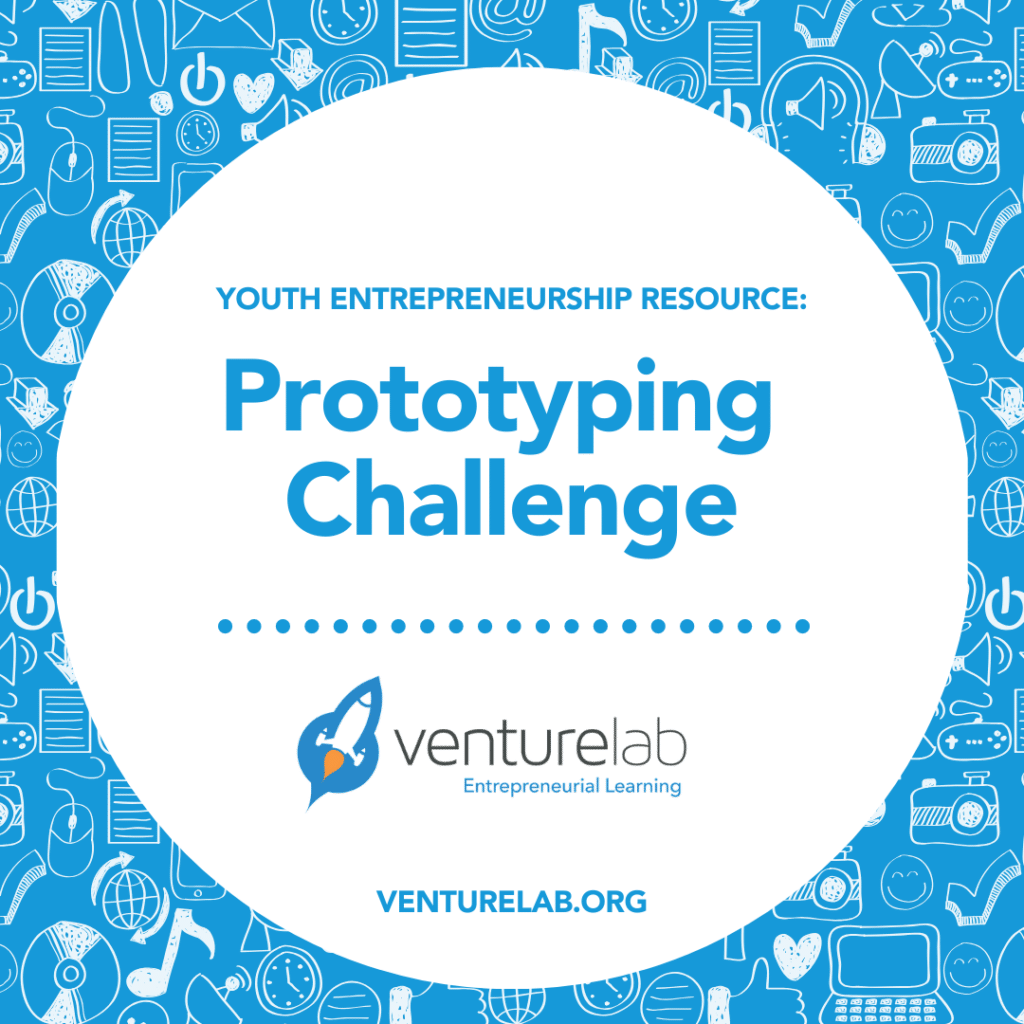This month’s free resource is an entrepreneurship essential that will get learners straight into generating solutions for a user or client’s problems by creating a prototype.
An entrepreneur’s product or service idea must meet the needs of the people it is intended for in order to be successful. To ensure this, they use an approach called design thinking to develop their ideas. We define design thinking as a creative approach to solving problems that focuses on users’ needs.
A prototype is NOT meant to look like the final product but rather should be used to brainstorm visually and show others what their ideas might look like.
Entrepreneurs use prototypes to test their ideas and fail early without investing time and money in creating a product that will not work or that customers do not want. Remember, EVERYTHING is a prototype that can be tested and changed! With this perspective, even “finished” products can be reimagined and reinvented.
Activity: Prototyping Challenge
Materials & Preparation
1. Gather 3 different materials in a bag – 1 bag per group
- One object that can serve as a fastener (Ex: pipe cleaners, rubber bands, paper clips)
- One object that can serve as a surface (Ex: coffee filters, cardboard squares)
- One object that can help create structure (Ex: straws, tongue depressors, tin foil)
2. Review Design Challenge Prompts
3. Print VentureLab Mindsets and Skills
Instructions
1. Tell students that they will be given a problem to solve and must do so by building the solution.
2. Split students into groups of 2 to 4.
3. Give each group a bag of materials. Select a problem from the Design Challenge Prompts or create your own, and write it somewhere all students can see. You can also give each group a different prompt.
4. Set a timer for 15 minutes and let students start creating!
Tip: Students may want to spend the first few minutes brainstorming. Do not discourage them but remind them that their goal is make and create!
6. As you circulate the room, encourage students to talk and explain by using the materials. Ask, “How might that look? How might that work?”
7. At least once during the activity, redirect students’ attention to how the group is collaborating, how individuals are feeling, and which entrepreneurial mindsets and skills are being used.
8. At the end of the 15 minutes, as time permits, have groups present their prototypes.
Post-Activity Discussion
- How did the prototype help you think about your idea?
- What was frustrating about making a prototype?
- What challenges did you face when communicating and working with group members?
Key Takeaways
- The best ideas are often not the first ones thought of.
- Prototyping allows entrepreneurs to think through their ideas quickly and with minimal cost.
- Explaining a thought or idea is easier if you have something tangible to help you explain.
This free prototyping activity comes from VentureLab’s entrepreneurship curriculum! Want more entrepreneurship resources and activities emailed to you each month? Join our monthly resource newsletter!





